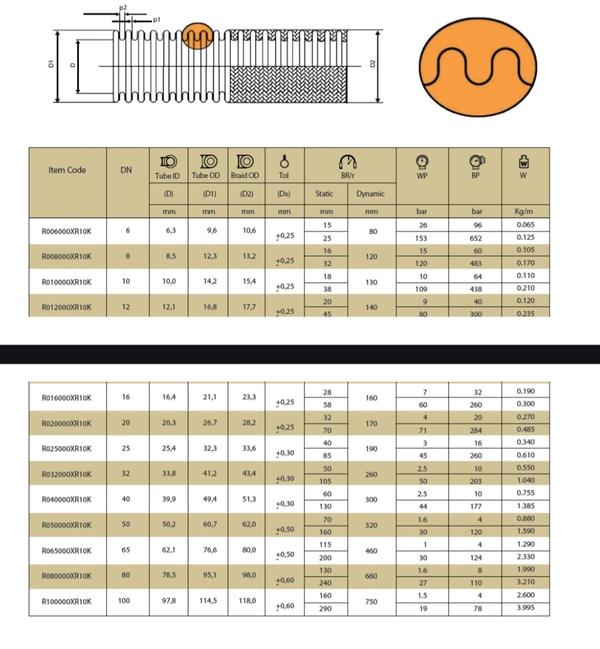Description
Product details
1. Purpose: Safety: The primary purpose of a non-conductive hose is to provide safety by preventing the passage of electrical current through the hose. This is important in environments where electrical hazards are present, such as in high-voltage areas or where electrical equipment is in use. **2. Construction: Inner Lining: Made from high-strength synthetic rubber or thermoplastic that is engineered to resist electrical conductivity. This material ensures that electrical currents do not pass through the hose. Reinforcement: The hose is reinforced with multiple layers of steel wire braiding or spiraling. While the reinforcement is primarily for handling high pressure and preventing the hose from collapsing, the materials used are selected to ensure they do not contribute to electrical conductivity. Outer Cover: The outer layer is made from a non-conductive material, often rubber or a specialized synthetic compound, which further insulates the hose from electrical currents. This cover is also designed to resist abrasion, chemicals, and environmental conditions. **3. Pressure Ratings: High Pressure: These hoses are designed to withstand very high pressures, typically ranging from a few thousand psi up to over 10,000 psi. They are constructed with a safety margin to handle pressures well beyond normal operating conditions. **4. Sizes and Specifications: Diameter: Available in various diameters to accommodate different flow rates and applications. Sizes are chosen based on the specific requirements of the hydraulic or pneumatic system. Temperature Range: Capable of operating in a wide temperature range, from very low to very high temperatures, depending on the materials used in the construction.






